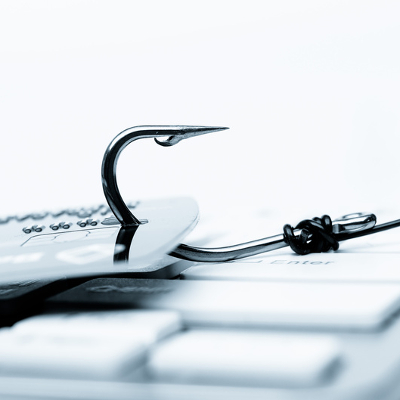Spam emails and scam emails are two different things. One is annoying but relatively harmless, while the other is trying to steal sensitive information, spread malware, or extort money.
Spam is Just Annoying
Spam clogs up your inbox and can be for distasteful products or porn. However, spam is essentially harmless.
Scam Emails are Dangerous
You may receive an email that appears to be from your bank notifying you of an urgent matter you don’t know about. It could look like a UPS or FedEx tracking link with details for a package that you don’t remember expecting. But hold up before you click! It could be a phishing scam.
Phishing Scams
Fraudsters use email in several ways. One way is to point you to a fake website posing as a legitimate one, like your online bank account. When you attempt to log into that site, they get your username and password!
Malware
Another common tactic for scammers is to use email to trick you into installing malware. Clicking an attachment can execute a malicious script that could hack your computer system, execute ransomware, or send scam messages to everyone in your contact list.
The most low tech scams may inform you that you have won a large sweepstakes prize and need to call a special phone number to claim it. Whatever form it takes, delete it and protect yourself from future scams.
Steps To Protect Yourself From Scam Emails
- • Protect your computer with a good antivirus program, and keep it current with the latest patches. Schedule regular deep scans.
- • Be suspicious. Read the email address of the send who claims to be your bank, Amazon, eBay, FedEx or UPS. It’s amazing how revealing those are.
- • Don’t click links in unsolicited emails. Type URLs into your web browser instead.
- • Do not click on unsolicited attachments.
- • If a friend or colleague sends you an attachment you’re not expecting, ask them about it first.
- • Don’t trust an unsolicited email because it has personal information. Fraudsters find information about you on the internet or social networks
- • Use strong passwords and change them frequently. Do not share them.
- • Use your email client’s image blocking feature. Scammers send out images containing an embedded pixel that will confirm the validity of your email address with a single click.
- • Beware; unsubscribing to a scam email only confirms that your email is valid.
- • Use a disposable email address for newsletters.
- • Don’t publish your email address in any public location.
- • If it sounds too good to be true, delete.
These tips can help you to avoid becoming a victim of a scam, and will also reduce annoying spam.
Need an email filter solution for your business? Give us a call at (973) 882-4644 or schedule a free network consultation.

